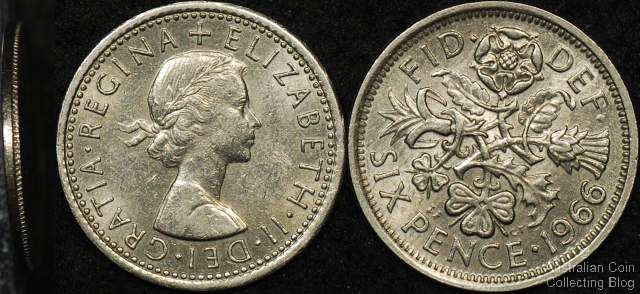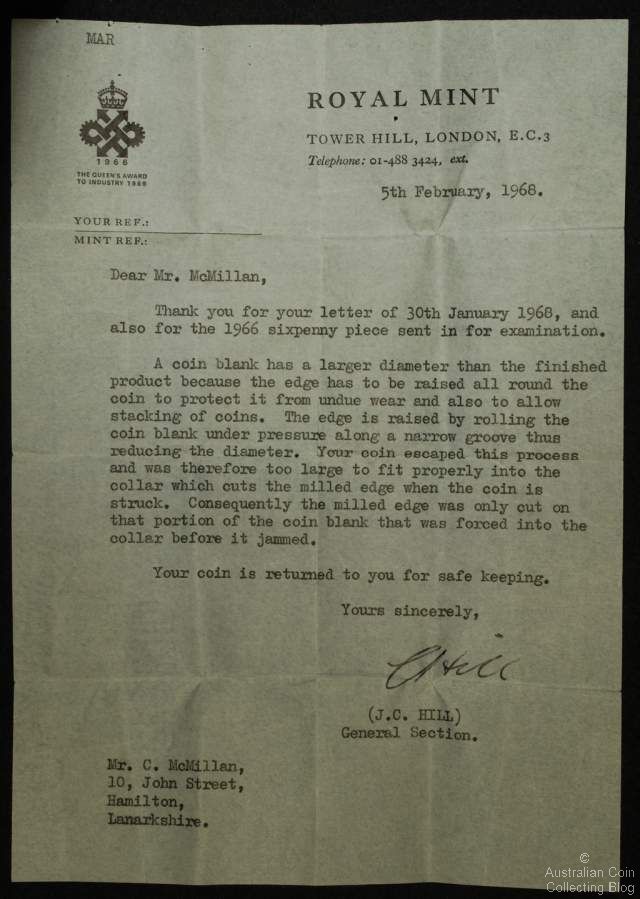
1966 Great Britain Sixpence with Straight Partial Collar Error
A partial collar coin error whether it be straight or tilted is a coin seen in many error coin collections. We've explained how this happens and is easily understood as the planchet having incorrectly seated in the dies when the coin was struck resulting in a skewed edge and partial milling. But have you thought further about why the planchet failed to sit properly in the first instance?
The answer to this question came in the form of a letter from the Royal Mint in London dated 1968 when Mr McMillan of Lanarkshire sent correspondence and an odd looking British sixpence to the Mint for examination. The coin proved to be a straight partial collar error and the documentation by JC Hill gives a suggestion as to it's occurence that we hadn't thought of before.
Prior to a coin blank being struck it is often fed through a rimming machine to be pre-rimmed before being struck into a coin. This process raises the edge of the coin and reduces the diameter of the planchet to allow for a reduced striking pressure (thus increasing the die life) and helps the coin wear better over the circulating life of the coin. Now if a coin blank missed this process of being rimmed it would therefore be more likely to not feed properly into the press resulting in an error just like a partial collar strike as it was just too large to fit correctly into the collar die.
Not all denominations of coins are pre-rimmed prior to the coins being struck. Is this why for some denominations you are much more likely to see this type of coin error? While on other denominations you just don't see with this type of error. This rimming process, or lack of it, is the likely reason for many of those partial collar errors in collector hands!

Royal Mint Letter Explanation of Error
Posted by harrisk at July 15, 2013 7:10 PM
Subscribe to our Newsletter


